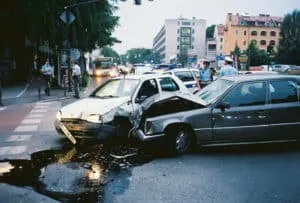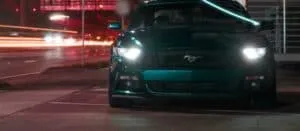Car accidents are the leading cause of death among children in the United States, especially California. Did you know that the Golden State has almost 170,000 miles of road? Unfortunately, those roads may lead to automobile accident injuries.
According to the California State Transportation Agency, California has the vastest and most sophisticated transportation system. As a result, it is necessary to follow all legal requirements to improve road safety and perhaps safeguard passengers. But, when it comes to children’s safety in automobiles, California has particular car seat legislation that specifies the types of car seats that should be used for children of various ages and weights.
Most Frequently Asked Questions Regarding Child Seat Safety
If you wish to learn about Child Seat Safety, stay with us. Here you will find information to the most frequently asked questions.
What is the California Law on Child Car Seats?
Caretakers should never carry a baby in their laps in the back or front seat unless the kid weighs 40 pounds or is 40 inches tall. California law mandates all children under the age of two to travel in a rear-facing car seat. Children under the age of 8 must be buckled up in a car or booster seat.
In virtually all states, territories, and provinces, infants and younger children must be restrained in a crash-tested child restraint seat when traveling in a motor vehicle. You should use child safety straps because it is the law and because it is the best way to prevent child injury and death in car accidents.
Is It Safe for a 10 Year Old to Ride in the Front Seat?
Children must not sit in the front seat until they are 13 years old since this is the safest practice. Since airbags are designed to protect adults in the event of a car accident, they cannot protect children in the front seat. As a result, the American Academy of Pediatrics (AAP), Disease Control and Prevention, the National Highway Traffic Safety Administration, and, most likely, your airbag and automotive manufacturer advises that all children under the age of 13 must ride in the rear seat for safety reasons.
How Much Does a Child Have to Weight to Sit in the Front Seat in California?
The child must be at least nine years old with a 4’9 height and 80 lbs. According to some laws, all children under the age of eight must be securely tied into a safety seat or booster in the rear seat.
Exceptions: A child weighing more than 40 pounds traveling in the rear seat of a car may only use a lap belt.
What Age Can Child Sit in Front Seat?
From the age of 13, several groups recommend that a child only travels in the front seat of a car. According to the American Academy of Pediatrics (AAP), all children under the age of 13 should ride in the back seat.
Can My 3 Year Old Sit In a Booster?
Three-year-olds are not ready to ride in a booster seat, even if they fulfill the manufacturer’s height and weight criteria. Children whose height or overall weight exceeds the car safety seat’s limit must use a booster until the seat belt properly fits, usually when they are 8 to 12 years old and have reached a height of 4 feet 9 inches. Many convertible and harness-to-booster car seats include straps that can support children weighing up to 65 pounds.
How Tall Does A Child Have To Be To Sit in the Front Seat in California?
Children older than 8 years and taller than 4’9” can ride in the front seat by law, although experts suggest using booster seats until they turn 13. According to the Centers for Disease Control and Prevention (CDC), children must travel in a forward-facing seat until they are at least 5 years old, according to Centers for Disease Control and Prevention (CDC).
What are the Height and Weight Requirements for a Booster Seat in California?
California law mandates that children use a booster seat (or a strapped car seat) until they turn eight or 4 feet and 9 inches tall. Ensure that your booster seat meets the manufacturer’s minimum and maximum size criteria—some works for a minimum of 4 years old, 40′′ tall, and 40 pounds.
What Height Does a Child Have to be Out of a Car Seat?
When a child’s height or overall weight exceeds the forward-facing restriction for their car safety seat, they must use a booster until the seat belt fits, which is usually when they are 8 to 12 years old and 4’.9.” According to the legislation, all children in the front or back seats of any automobile, van, or commercial vehicle must wear belts until they are either 135 cm tall or 12 years old.
Can 9-Year-Olds Sit In the Front Seat in California?
Yes, a nine-year-old can travel in the front seat, but only in the following circumstances:
1: Children under the age of eight who have not yet turned nine can travel in the front seat of a car in a federally-authorized child passenger restraint system.
2: There isn’t any room at the back.
3: In the back, there are side-facing jump seats.
Can an 11 Year Old Sit in the Front Seat in California?
An 11-year-old is allowed to ride in the front seat under California law. However, the rear seat is the safest for children. The lap and shoulder belts are required for an 11-year-old. A booster seat with a lap and shoulder belt is needed for a 4-year-old.
When Can Kids Stop Using a Booster Seat?
When the vehicle seat belt adequately fits them without needing a booster seat, children can stop using it. This usually happens when a child is between the ages of ten and twelve, is around five feet tall, and weighs approximately 120 pounds. However, because each kid and vehicle is different, make sure the seat belt in your car is suitable for the child in question before removing the booster seat.
Why Most Parents Prefer Backless Booster?
While high-back boosters are the safest option, backless boosters are still safer than no booster at all, and we can see why some parents may choose a no-back type. Backless boosters are typically less priced, with some available as low as $14.
When is a Child Restraint Required?
You should use rear-facing child restraints until your kid is at least 15 months old. A forward-facing car seat can be used after your child is 15 months old. It is safest to use a rear-facing child restraint until the kid reaches the age of four.
When Must a Child Sit in the Rear Seat?
From birth to age 2–4, use a rear-facing car seat. Infants and toddlers must be secured in a rear-facing car seat with a harness until they reach the car seat’s maximum weight or height restriction. This provides the most effective defense.
When Can a Child Start Using Seat Belt?
When a child can easily rest their back against the car seat and bend their knees over the edge of the seat, they can start using a standard seatbelt. This usually occurs when children are between 8 and 12 and are around 4 feet 9 inches (150 cm) tall.
In What Seats Does the Seat Belt Law Apply?
The fundamental seat belt law (CVC 27315) mandates the use of a seat belt by the driver and all passengers aged 16 and up. Front and rear seat passengers’ use of seat belts directly impacts the amount of injury they, other passengers, and the driver sustains during an accident or sudden harsh braking incident.
Is it Illegal to Smoke in a Car with a Child in California?
It is illegal to smoke a pipe, cigar, or cigarette in a motor vehicle, whether moving or stopped, in which any one of the occupants is a child, according to a California legislation that went into effect in January 2008. When a minor (17 years old or under) is present, the law (118948 et seq.) prohibits smoking in a motor vehicle. A fine of up to $100 can be imposed for the violation.
Safety Measures for Child Seat Safety
Unfortunately, according to a poll performed by IDriveSafely, 25% of parents do not correctly secure newborns and toddlers in car seats when driving a mile or less. Make sure children aged 12 and under are buckled up in the rear seat or booster, whichever is suitable for their age, height, and weight—at all times when you’re on the road. Keep reading to find some more safety tips for children in the car.
- The age at which your child must use a car seat, as well as the height and weight requirements for car seats, differ by state. To ensure that you follow the rules and regulations, check your state’s car seat legislation. Child safety seats are required in all 50 states, the District of Columbia, and US territories.
- The shoulder straps must be at or below the shoulders of your child. Child safety seats contain many harness holes, allowing you to modify the harness as your child grows. Ensure that you’re using the harness properly.
- Every year, recommendations, legislation, and manufacturing practices improve. By the time you have a second kid, what was current for your first child may have been modified. Be sure you’re following current recommendations to ensure your child’s safety. Register your car seat to receive safety updates from the manufacturer.
- The most critical factor in child seatbelt safety is the involvement of parents and caretakers. Children who see their parents buckling up are more inclined to buckle up themselves. Wear a seat belt yourself to show the importance of wearing one.
- As new facts and crash test data become available, most parents are unaware of current car seat safety guidelines. Seek an expert to assist you in providing the most accurate guidelines.
- Each car seat has its own set of instructions for installation. Carefully follow the manufacturer’s instructions.
- Grab the car seat’s base with both hands. When pushed at the belt route, you shouldn’t be able to move the safety seat more than 1-inch side to side or front to rear. If you can, you need to tighten it more. This is one the most common mistake made by parents.
- All children should face forward until they reach the car seat’s maximum height or weight limit.When newborns face forward, their relatively heavy head can catapult forward, expose the spinal cord, and place them at risk of paralysis or death.
Can You Claim for a Child in a Car Accident?
Children who have been hurt in an automobile accident, whether as a passenger or pedestrian, have the same legal rights as adults to seek personal injury compensation. Still confused? Get in touch with Phoong Law.We focus on personal injury law, fighting for the rights of people who have been hurt due to someone else’s negligence. Make an appointment for a free-no-obligation case evaluation now.
We’ve successfully handled thousands of personal injury claims and are ready to assist you. Contact us via phone, chat, or email at any time, 24 hours a day and seven days a week.
Final Thoughts
Ensuring your child is secure in your car is one of the most responsible things you can do as a parent. Hundreds of children under the age of 13 are killed in vehicle accidents every year in the United States. Thousands more are injured and suffer from lifelong brain damage and spinal cord injuries. Although traffic crashes are the leading cause of mortality among children aged 5 to 14, many fatalities and injuries could have been avoided if children were properly secured with seat belts or child-safety seats.
























